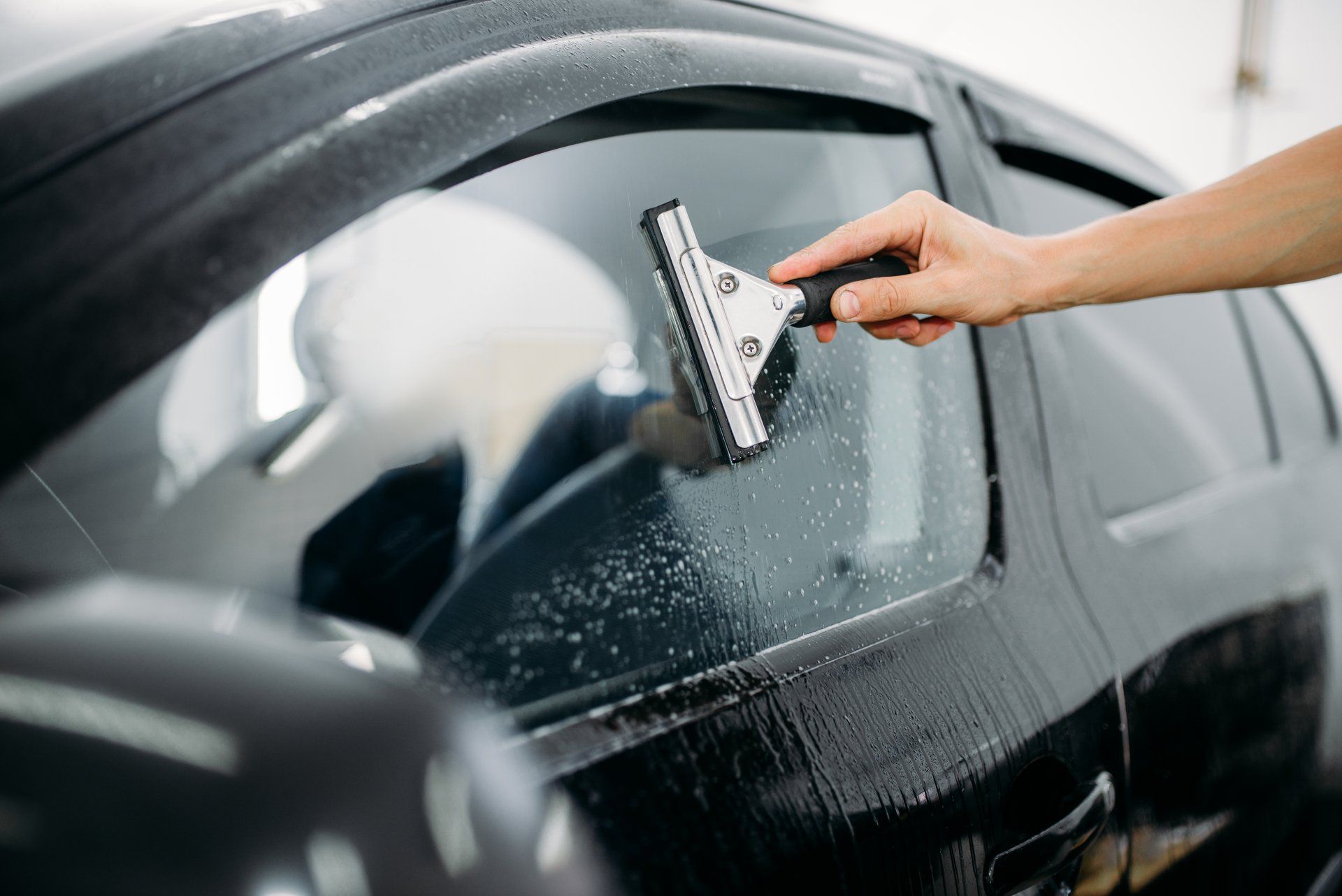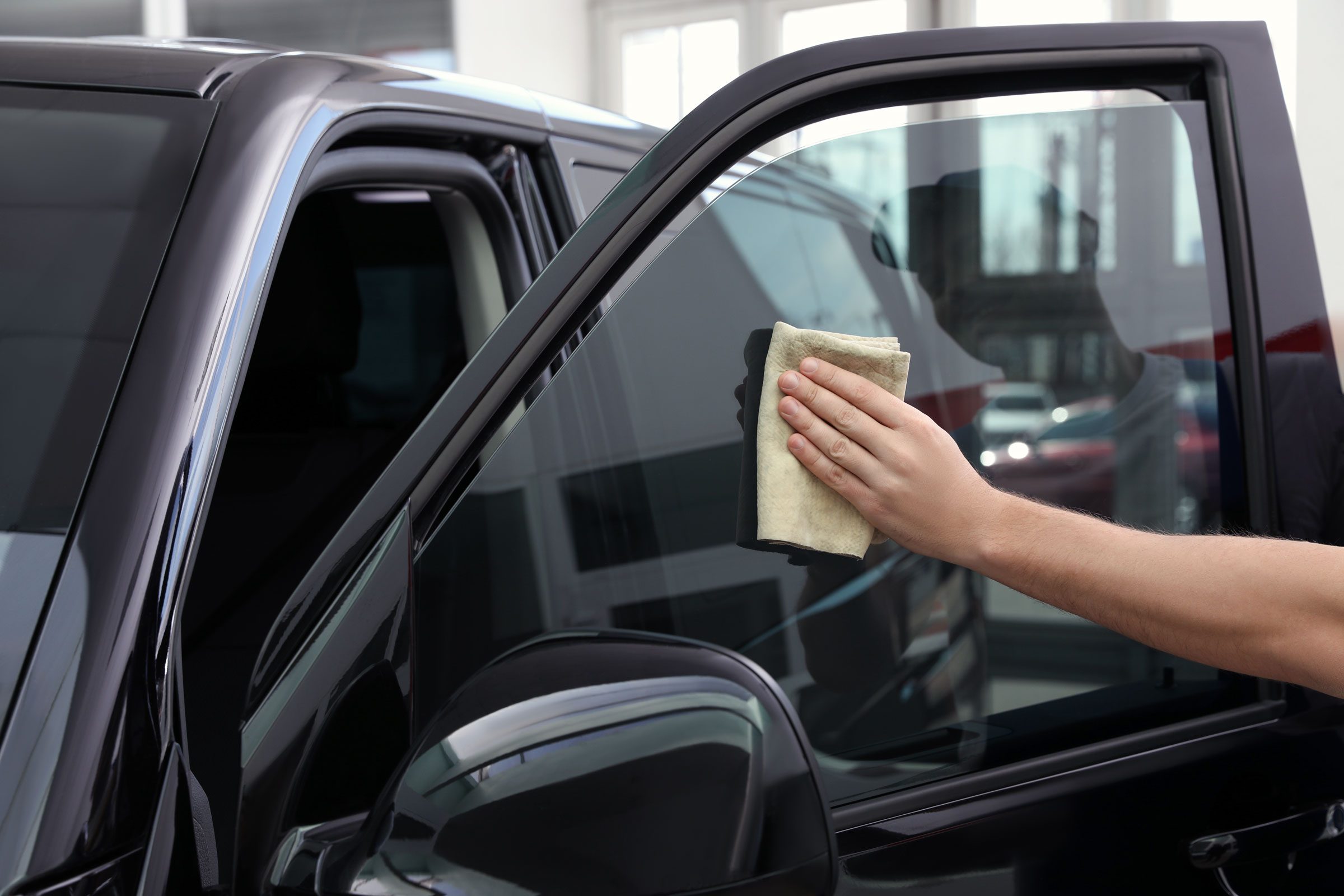Window Tinting Options: Discover the Right Shade for Your Style and Demands
Picking the appropriate window tint for your lorry includes a mindful consideration of various aspects, including personal visual appeals, functional needs, and lawful limitations. With options varying from light tintss that offer minimal privacy to darker tones that improve seclusion, the selections can be frustrating. window tinting. Understanding the effects of noticeable light transmission (VLT) percents and the benefits of different materials is crucial in making a notified choice. As you ponder your choices, you might question exactly how these aspects interaction to produce not just a look, however a tailored experience when traveling.
Comprehending Window Tinting Degrees
When taking into consideration window tinting, it is important to recognize the various levels of tint readily available, as they substantially affect both visual appeals and functionality. Window tinting is categorized based on Noticeable Light Transmission (VLT) portions, which show the amount of light permitted to travel through the glass. The VLT portion can vary from very light (over 70%) to very dark (below 5%)
The key degrees of tint consist of clear, which uses UV protection without modifying presence; light tint (over 50% VLT), which a little decreases glare while keeping presence; tool tint (around 35% VLT), striking an equilibrium between personal privacy and light transmission; and dark tint (listed below 20% VLT), supplying substantial privacy and heat reduction but limiting external visibility.
Comprehending these degrees is important as they can affect driving safety, legal conformity, and personal comfort. In addition, neighborhood guidelines usually dictate permitted tint levels, differing by state or town. Prior to selecting a color, it is suggested to research study and make certain adherence to these regulations while considering individual preferences for style and practical advantages.
Popular Tint Shades Explained

One of the most popular options is the classic dark tint, normally ranging from 20% to 5% VLT (Noticeable Light Transmission) This shade uses maximum personal privacy and a streamlined, innovative appearance. It efficiently blocks UV rays and heat, making it optimal for sunny environments, though it may restrict exposure in the evening.
Alternatively, lighter shades such as 35% or 50% VLT give a more subtle look while still offering some degree of personal privacy. These tones are ideal for those looking for an equilibrium between looks and functionality, as they enable for better presence and follow different legal requirements.
One more arising choice is the ceramic tint, which can come in a range of shades - window tinting. It offers exceptional warmth being rejected and UV security without considerably altering the car's appearance

Lawful Laws for Window Tinting
Understanding the legal laws bordering window tinting is vital for vehicle owners wanting to tailor their cars and trucks. Each state in the U.S. has certain regulations governing the darkness or lightness of window tintss, typically measured by Visible Light Transmission this page (VLT) portion. VLT describes the amount of light that can travel through the film and the glass incorporated.
In many states, laws dictate various VLT percentages for numerous windowss, including front windshields, side windowss, and rear windowss. Some states may allow a tint of 70% VLT for windscreens while permitting darker tintss for back windowss. Additionally, specific states have restrictions on reflective tintss, which can develop glare for other vehicle drivers.
Failing to abide by these laws can bring about penalties, mandated removal of the tint, and raised insurance premiums. Lorry owners need to speak with neighborhood regulations or state DMV web sites to guarantee they are within lawful limitations before continuing with installment. Understanding these policies not only helps avoid legal effects but additionally ensures a risk-free driving experience.
Benefits of Various Tint Products
Discovering the advantages of different tint products discloses substantial advantages that can improve both the functionality and aesthetic allure of an automobile. Each material uses unique features fit to certain requirements and preferences.
Dyeded window films are prominent for their price and capacity to decrease glow. They successfully block UV rays, safeguarding the inside from fading, though they might not offer the highest heat denial. Metalized films, on the various other hand, deal exceptional warm decrease and UV defense as a result of their reflective residential or commercial properties. They can boost personal privacy and security but might conflict with digital signals.
Ceramic window films stand for a premium choice, supplying remarkable heat being rejected while preserving exposure. They are non-metallic, hence staying clear of any signal disturbance, and are very sturdy, resisting scratches and fading over time. Furthermore, get more ceramic films do not have dyes, making certain a longer-lasting appearance.
Last but not least, crossbreed films combine components from dyeded and metalized alternatives, supplying a well balanced performance in regards to warmth denial, glare decrease, and cost. Each tint material serves unique functions, permitting lorry proprietors to choose the very best suitable for their lifestyle and visual preferences, ultimately improving their driving experience.
Picking the Right Tint for You
Locating the right window tint includes taking into consideration numerous variables, including personal preferences, automobile type, and local guidelines. Assess your individual design and preferred level of personal privacy, as these will certainly lead your choice of tint shade. Darker tintss supply enhanced privacy yet may not appropriate for all vehicle drivers, particularly those that favor a more open feel inside their vehicle.
Following, consider your vehicle kind, as the size and form of windowss can influence the our website effectiveness of particular tintss. For circumstances, larger windowss may take advantage of reflective tintss that decrease glow while smaller sized windowss might be extra suited to dyeded films that supply refined looks.
Additionally, it's essential to inspect regional regulations relating to window tinting. Several states impose limitations on the permitted darkness and reflectivity, specifically for front windowss. Compliance with these regulations is important to make sure and stay clear of penalties safety and security.
Last but not least, examine the tint material that finest matches your demands. Options include dyeded, metalized, ceramic, and hybrid films, each offering distinct advantages connecting to warmth being rejected, UV protection, and toughness. By thinking about these factors, you can confidently select a home window tint that aligns with your style and functional demands.
Final Thought
To conclude, picking the appropriate window tint calls for cautious consideration of numerous aspects, consisting of VLT portions, regional regulations, and the wanted visual. Various tint materials provide special advantages that can enhance vehicle comfort and defense. By thoroughly recognizing the readily available alternatives and aligning them with private choices and sensible requirements, one can achieve an optimum equilibrium between design and capability in window tinting choices.
Choosing the appropriate window tint for your lorry includes a careful consideration of numerous variables, consisting of personal aesthetics, practical needs, and lawful restrictions. Each state in the United state has certain laws regulating the darkness or agility of window tintss, usually gauged by Visible Light Transmission (VLT) percentage. Some states might enable a color of 70% VLT for windscreens while permitting darker tintss for back windowss.Finding the right window tint involves considering various factors, consisting of personal preferences, car type, and regional regulations.In conclusion, choosing the ideal window tint needs cautious consideration of numerous factors, consisting of VLT portions, local laws, and the preferred visual.